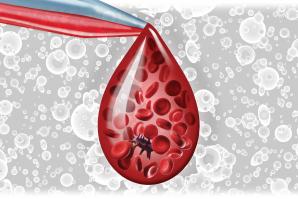
True Detection
Anpac Bio — a medtech company building its U.S. headquarters in Sacramento — makes a bold claim to revolutionize cancer screening
But Anpac Bio’s major innovation is not about where, but when. Catching cancer in the earliest stages has been Yu’s goal since the company launched in 2010. With so much medical research focused on treatment and imaging, he set his sights on early detection as the key to prevention. His ideas were unconventional.

Trump’s Offshore Cash Plan Will Benefit Investors, Not Jobseekers
Donald Trump wants American companies to bring trillions of dollars in offshore cash back home, arguing that the money could be used to fund a manufacturing renaissance.

Startup of the Month: LiquidGoldConcept
Health tech startup delivers breastfeeding toolkit — will mothers and med students latch on?
In the first few days after a baby is born, the mother produces colostrum — a yellowish, thick and sticky substance packed with fat, micronutrients and antibodies. In breastfeeding circles, this special milk is called “liquid gold,” which is essentially a supercharged immunity boost to equip newborns for their new world.

The Future Success of Sacramento Business isn’t in Sacramento — Or is it?
Businesses in Northern California are especially well-positioned to expand globally. The region has a culturally diverse population and an enviable proximity to ports, airports, rail systems and foreign trade zones. Even as exporting makes sense for individual businesses, encouraging companies to expand internationally makes even more sense for the local economy.

The Hard Cell
Do stem-cell treatments for racehorses hold the key to healing human athletes?
Moore believes UC Davis could be the first institution in the country to have an approved clinical trial using banked stem cells in a young, athletic population.

Startup of the Month: Brass Clover Cold Brew Coffee Company
For Oak Park startup, coffee is a drink best brewed cold
Is 14 too young to get into coffee? It wasn’t for Randall Echevarria. He grew up in Crescent City on the California/Oregon border, and the small town’s first coffee shop gave him his very first job. He started as a barista and moved up in the ranks over four years, his favorite part being the beverage development. Turns out, this high school gig was just warm-up.

The Internet of You
Cutting-edge technology brings sensors into every aspect of our daily lives, making them safer, more convenient — and a little scarier
Imagine a piece of technology the size of an aspirin. It can go anywhere, be embedded in anything and keep track of any action, movement or sound — imparting huge amounts of data, like tiny puzzle pieces that can be correctly fitted to form the picture of your life. It sounds Orwellian, the ability to monitor your habits at all times.

More Is Not Always Better
With jobs on the rise in Sacramento, we must consider what type of jobs will best benefit our region
The best economic news in Sacramento lately is that jobs are back. A recent survey by the state’s Employment Development Department shows that the six-county Sacramento metro region has rebounded, gaining back jobs it lost during the recession — 25,000 in just the last year. But, while this is fantastic news, it’s not enough.

Women’s Work
Four local leaders discuss their journeys to the top of male-dominated industries
Effective leaders don’t come from one mold. The women featured below have excelled in nontraditional industries due to their talent, vision, perseverance and the (sometimes unlikely) mentors who guided their trajectory. They shared their stories with us — where they started, their rise to leadership and their thoughts on mentoring the next generation of powerful women.

Opinion: A $15 Wage Works in Parts of California, Not All
California has reached a deal to raise its statewide minimum wage to $15 an hour. This would certainly be a breathtakingly broad political experiment. The question is whether it will turn into a breathtaking disaster.


